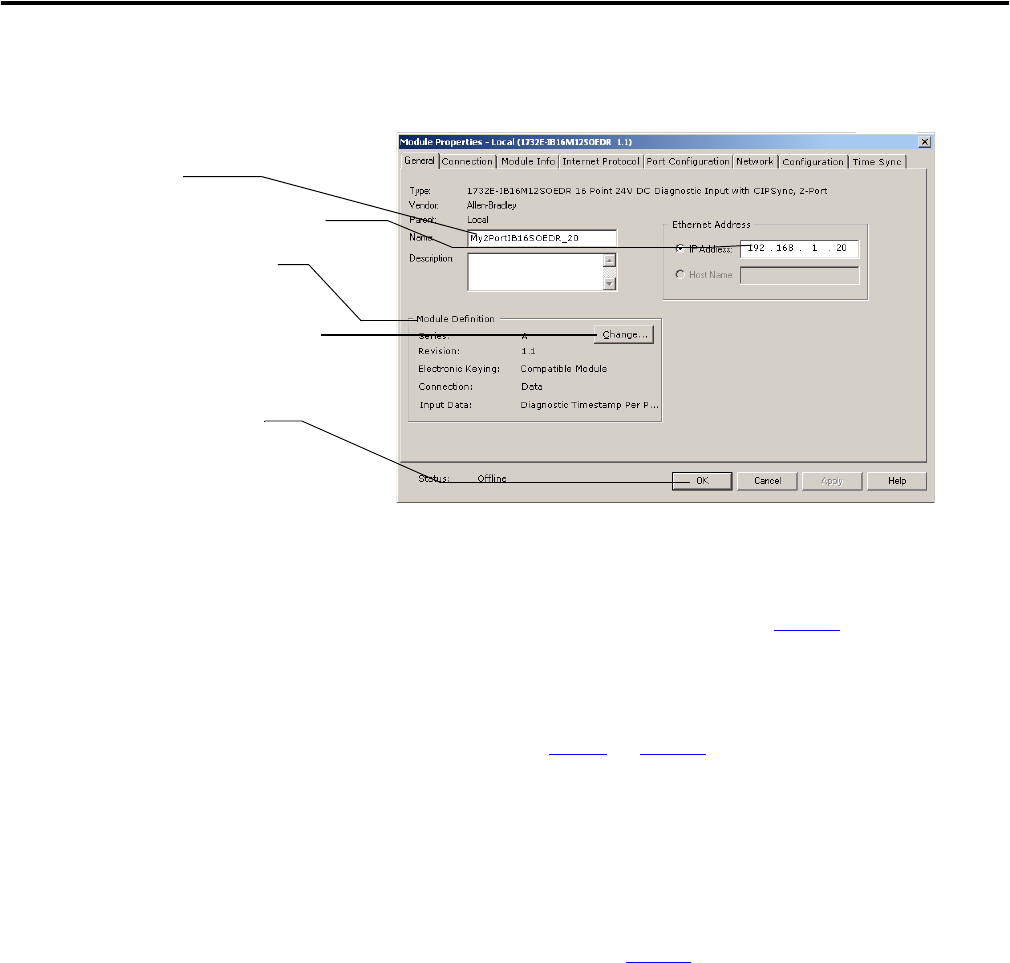supporting Sequence of Events
Table Of Contents
- 1732E-UM002A-EN-E 1732E EtherNet/IP ArmorBlock Supporting Sequence of Events User Manual
- Important User Information
- Table of Contents
- Preface
- Chapter 1 - About 1732E ArmorBlock Modules
- Chapter 2 - Module Overview
- Chapter 3 - Use the Module in an ArmorBlock System
- Chapter 4 - Install Your Module
- Chapter 5 - Configure the Module for Your EtherNet/IP Network
- Chapter 6 - Configure the Module Using RSLogix 5000
- Introduction
- Set Up the Hardware
- Create the Example Application
- Configure Your I/O Module
- Overview of the Configuration Process
- Add a New Bridge and Module to Your RSLogix 5000 Project
- Use the Default Configuration
- Change the Default Configuration
- Download Your Configuration
- Edit Your Configuration
- Access Module Data in RSLogix 5000
- Configure RSLogix 5000 and the 1756-EN2T Communication Module for CIP Sync
- Chapter Summary and What’s Next
- Chapter 7 - Module Features
- Introduction
- Determine Module Compatibility
- Module Features That Can Be Configured
- Chapter Summary and What’s Next
- Chapter 8 - Using the Module
- Chapter 9 - Interpret Status Indicators
- Chapter 10 - Troubleshoot the Module
- Appendix A - ArmorBlock 2 Port Ethernet Module Specifications
- Appendix B - Module Tags
- Appendix C - 1732E EtherNet/IP ArmorBlock Supporting Sequence of Events Data Tables
- Appendix D - Connect to Networks via Ethernet Interface
- Appendix E - 1732E ArmorBlock I/O Embedded Web Server
- Glossary
- Index
- How Are We Doing?
- Back Cover

Publication 1732E-UM002A-EN-P - March 2010
34 Configure the Module Using RSLogix 5000
You can either accept or change the default configuration as shown...
Use the Default
Configuration
If you use the default configuration and click on OK, you are done.
You can skip to Download Your Configuration on page 37
for instructions on
downloading your default configuration to the controller.
Change the Default
Configuration
If you click Change... in step D on page 34, you can change the Module
Definition information. Select tabs on the Module Properties dialog to edit
specific configuration for your module in RSLogix 5000, for example the
Configuration tab.
Some of the screens that appear during this initial module configuration
process are blank and are not shown here. However, those screens can be
important during online monitoring. To see these screens in use, see Chapter
10, Troubleshoot the Module on page 71
.
A. Name the module.
B. Enter the module’s IP address as shown.
C. Make sure the Module Definition
information matches this example.
D. Click Change... to edit the Module
Definition for your module before
downloading the program to the controller.
E. Click OK to accept the default
configuration.










